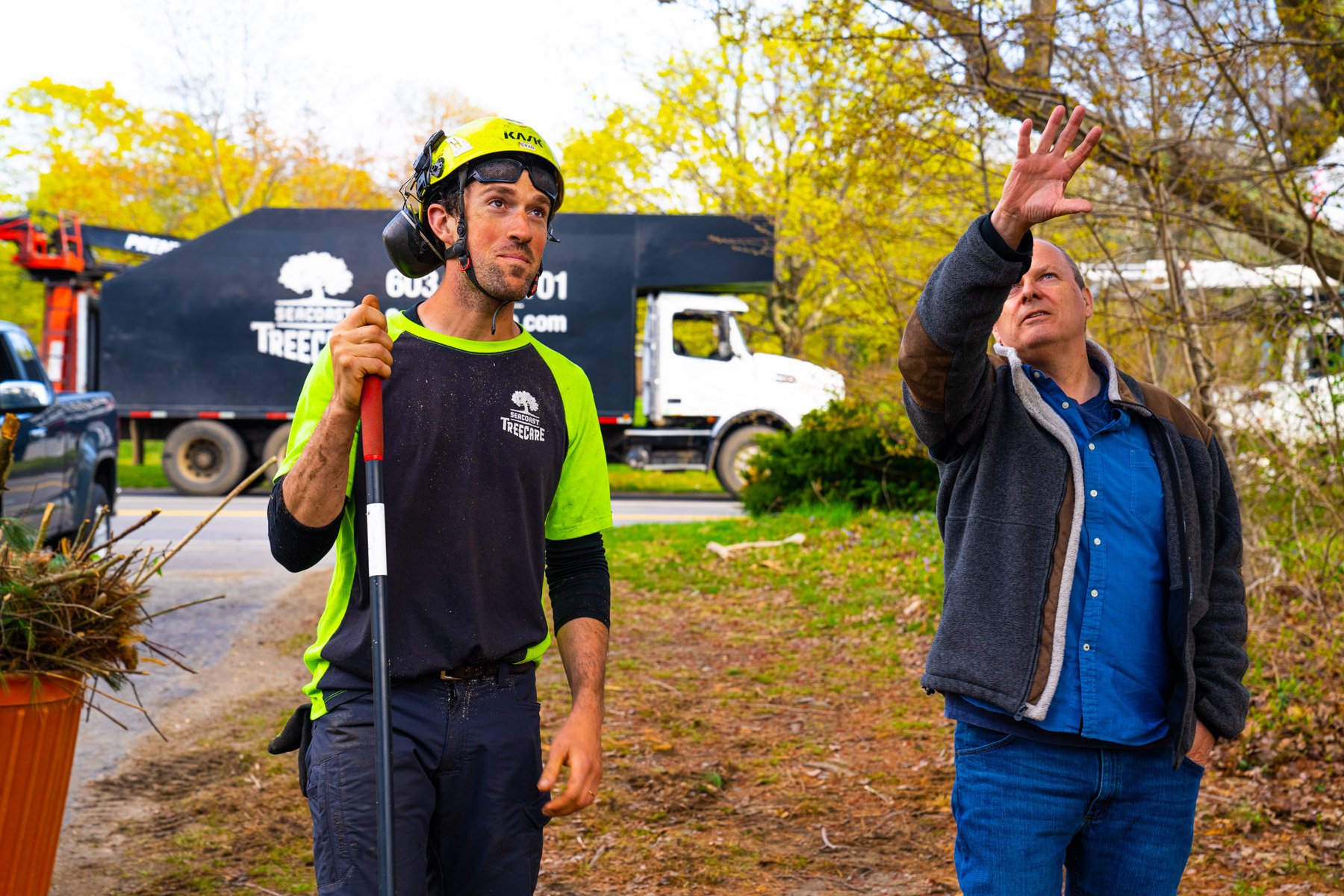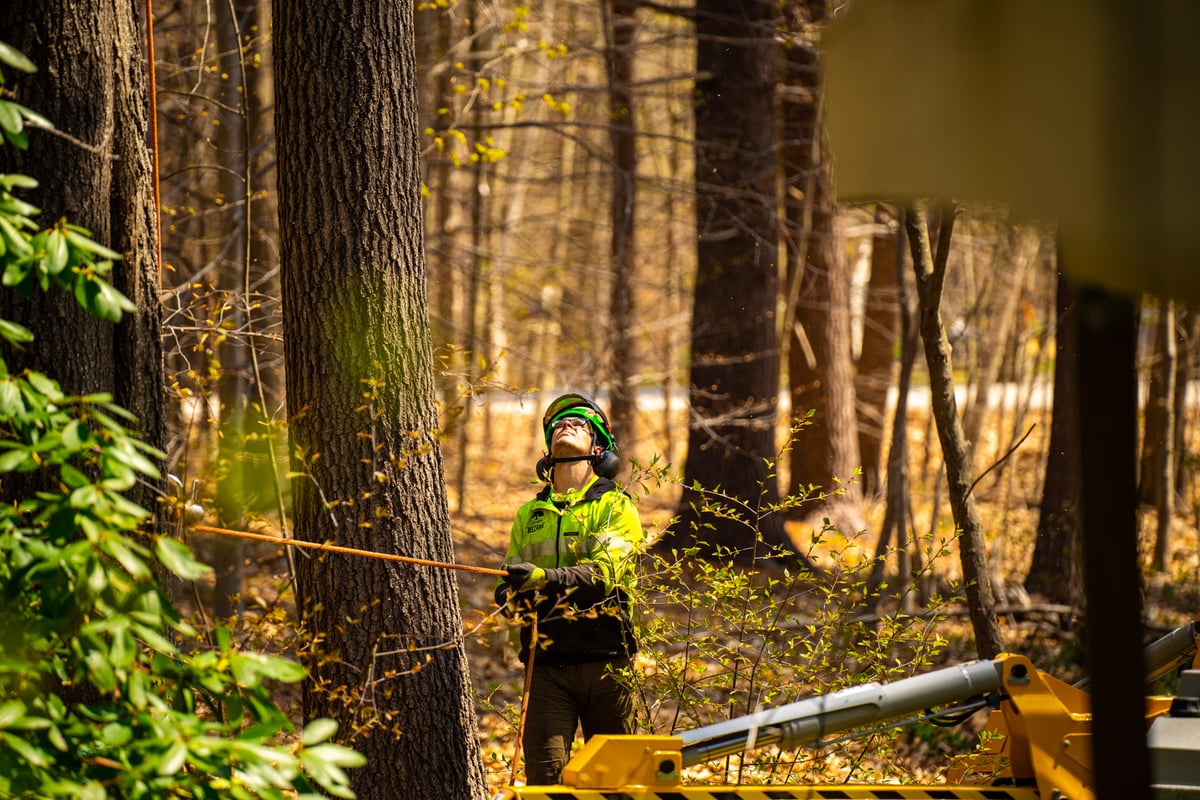
What is Tree Cabling and Bracing? Understanding The Techniques
Trees can be such an asset to your New England property. They add beauty, shade, and wind protection.
But sometimes, if a tree is structurally defective in some way, it can pose a liability. A tree that is growing in a way that inhibits it from supporting its weight can result in the tree splitting or falling.
This is where tree cabling and bracing come in.
Cabling and bracing trees can be an effective way to reduce the risk of a tree falling due to structural defects. This can reduce the liability and the worry that your tree may be causing, without having to remove it from your property.
In this article, we’ll dive into some details on tree cabling and bracing so you can determine if this service is right for you.
What is Tree Cabling and Bracing?
Trees and their limbs can be extremely heavy. For that reason, any weakened areas can pose a real threat, particularly during winter storms.
With tree cabling, specialized hardware is used to add extra support to the canopy of the tree. When installed properly, these cables will be hardly noticeable from the ground level.

Tree bracing, on the other hand, involves the addition of steel rods to the trunk of the tree or to its limbs. This also adds support and helps to reinforce weak spots.
An evaluation by a Certified Arborist can help determine whether your tree needs tree cabling and bracing. Depending on what’s going on with your tree it may require one or both of these services.
Proper Tree Cabling and Bracing Techniques
In order to truly gain peace of mind that cabling and bracing are reducing the risk of your tree falling, you must work with a qualified tree care service. That’s because you want to make sure that proper tree cabling and bracing techniques are being used.
Look for a company that employs Certified Arborists, so that you can be confident you’re working with a company that truly understands the structure and growth of trees. This makes a big difference in the proper installation of rods and cables.
Of course, over time, as trees grow and as weather impacts your tree, the cables may need to be adjusted or even replaced. You’ll want to make sure that you’re working with a tree service that is checking on your tree over time.
When installed properly, cabling and bracing trees can help preserve trees on your property. However, it’s important that structural defects are recognized early on.
In fact, a proactive tree care service in Southern NH, ME, and MA might even suggest cabling and bracing tree species that are notorious for splitting, even if it hasn’t occurred yet.
While it’s always our goal to preserve trees, in some cases, tree removal could be the best course of action. Cabling and bracing can’t save every tree and if it’s too far along with structural issues, removal might be the safest way to deal with your tree.
Choosing Tree Care Services in Southern NH, ME, and MA
As with any tree care service, getting the most out of tree cabling and bracing comes down to making a wise choice in what company you hire.
Ultimately, you want to find a company that has your best interest at heart and that you can build a long-term relationship with.
Your property requires ongoing care and it’d be great to partner with a company that you truly trust. After all, you’ll want to make sure that they’re keeping an eye on your cabled-and-braced tree so that it continues to be safe.
At Seacoast Tree Care, we’re committed to preserving the health and beauty of trees by performing vital services like tree pruning, tree cabling and bracing, and tree removal, the right way. When you make a wise choice in tree care services, you’ll ultimately take an important step in protecting the value of your property’s trees.
Ready for safer and healthier trees at your Southern NH, ME, or MA home? Request your consultation and get a free quote for tree pruning services. We service properties in and around Stratham, NH, Kittery, ME, and Haverhill, MA. By making a wise choice, you’ll know your trees are in good hands.


